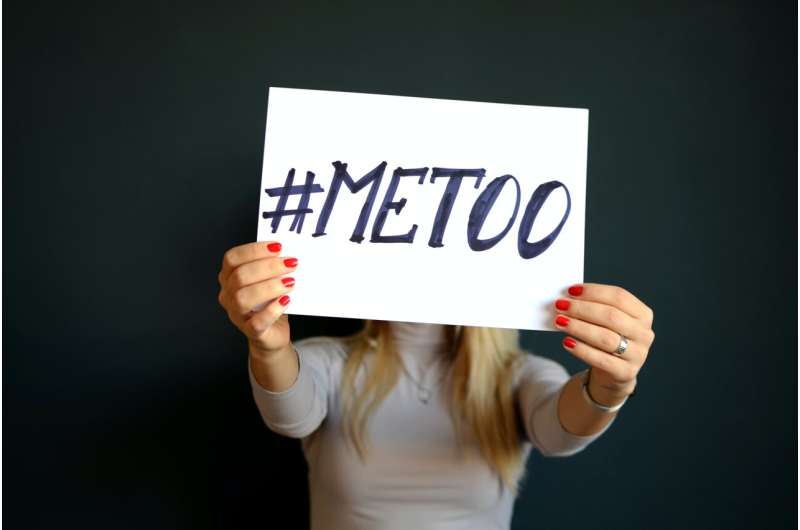Viewpoint: The Pelicot rape case revealed not a group of monsters but a culture that enables the abuse of women

The conviction of Dominique Pelicot and 50 other men for the aggravated rape of his wife Gisèle Pelicot, perpetrated over years of horrific violence has been shocking. Their trial revealed that Dominique Pelicot recruited men to rape his wife while she was comatose, having been drugged by him.
Gisèle Pelicot has become a symbol of strength and courage, having waived her right to anonymity at the start of the trial. In doing so, she focused the attention squarely on her attackers.
But while the details of these crimes are extreme, we can only fully learn from them if we accept that describing Dominique Pelicot as a monster is to minimize a wider culture that enables violence against women.
We must now challenge the notion of "exceptional monstrosity" that has become associated with Dominique Pelicot. His crimes are extensive, horrific and, indeed, monstrous. However, the dangers of characterizing his actions as those of a particularly deviant "monster" are that we underplay the pervasiveness of men's violence against women.
Sexual harassment and violence disproportionately affect the lives of women and girls. It exists on what has been termed a "" spanning sexualized name-calling, unwanted touching, flashing, online harassment and trolling, sexual assault and rape.
One could argue that sexual violence has become hyper-visible in recent times, following the emergence of online movements that seek to highlight its wide-reaching pervasiveness, such as The Everyday Sexism Project, #MeToo, and Everyone's Invited.
These platforms have spread awareness of the way in which violence towards women and girls is enacted. They give voice to girls' and women's testimonials about how they modify and restrict their own behavior, movement and language in order to avoid or mitigate the impact of sexual harassment and violence in public spaces.
Decades of research shows that men's violence against women is widespread and pervades a range of contexts. It happens in workplaces, schools, universities, and homes.
The found that violent crimes against women and girls in England and Wales had increased by 37% from 2018 to 2023. The shows more than three-quarters of women report feeling very unsafe in public spaces after dark due to the risk of violence.
Globally, are estimated to have experienced sexual violence. We have to assume that these are underestimates, given that more than do not report their experiences to the police.
Violence against women and girls is therefore not exceptional or perpetrated only by a few problematic individuals. Educational research shows that sexual harassment and violence are pervasive in schools, colleges and universities.
Recent reviews show that nearly a quarter of young girls aged 7–12 have reported experiencing sexual harassment from boys, including . And 92% of girls aged 13–18 have experienced sexualized and sexist name-calling.
and shows how sexual harassment is misperceived, justified and even normalized. The notion that the problem is confined to some "bad apples" prevails over an understanding of gender violence as embedded in the culture of so many institutions.
Revered, respected and men have been investigated and prosecuted for sexual harassment and violence towards younger men, girls and women, sometimes over decades. The language that is often used to describe them is that they are "monsters"—that they are "evil" or "sick."
They are cast as unusual or as particularly problematic. But how can it be that these are particularly monstrous or unusual men, when violence against women and girls is so pervasive?
Starting at the beginning
A primary risk factor for gender-based violence is gender inequality. In other words, contexts that are gender unequal, or whose cultures support or amplify gender inequality, are fertile ground for sexual harassment and violence.
Researchers are beginning to ask what it is about schools and universities, for example, that allows such practices to occur to such an extent. How do these institutions create or support gender inequality, and therefore, create cultures in which gender-based harassment and violence take place? Indeed, how are such cultures established and sustained in other sectors of society?
We know that expectations about how boys and girls should and shouldn't act underpin gender inequality, for example. Young men are expected to be dominant, powerful and in control, while young women are taught to be more submissive, socially pleasing and passive. These expectations are produced, reinforced and upheld in families and social institutions, such as schools.
Evidence suggests that some young people are beginning to traditional gender norms. But societal policing of these norms remains powerful. Expectations are often narrated as though they are part of the essential nature of boys and girls.
In order to challenge organizational cultures that enable gender-based violence, our starting point must be the systemic nature of gender inequality and the ways it plays out in everyday actions and interactions. It is vital that we understand how "laddish" behavior that includes forms of sexual harassment arises, and how it is allowed to become so widespread.
These acts are not only committed by "monsters." It is not behavior that is limited to certain men or certain environments. It is produced in a wider cultural context that supports gender inequality and that normalizes this behavior.
While Dominique Pelicot's crimes are extreme and horrific, they could only have happened in a society that allows less extreme forms of gender-based violence to be sustained. It is a hard truth to face, but Pelicot is not an exception.
Provided by The Conversation
This article is republished from under a Creative Commons license. Read the .![]()



















